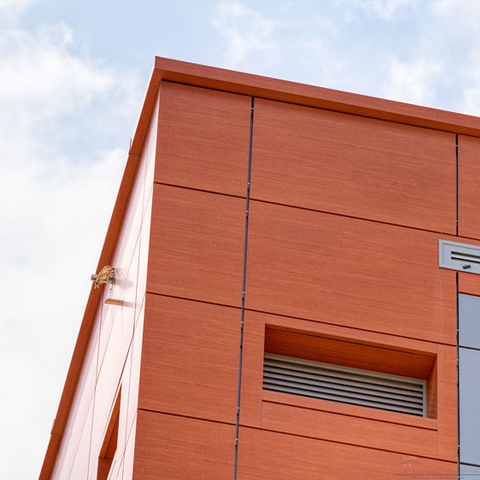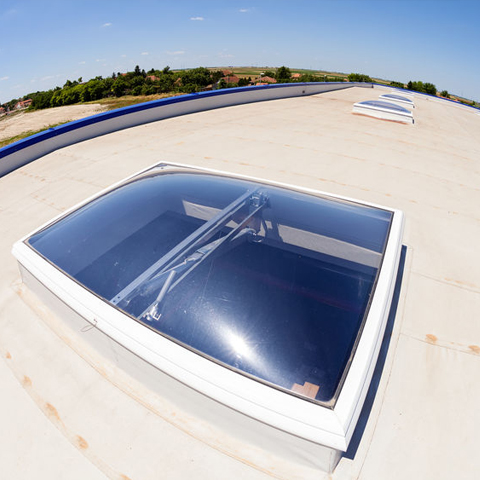
Choosing the best material for your building
When you own or manage a commercial building when it needs repair or replacement, choosing which commercial roofing materials are best can be confusing. There are several types of commercial roofs and different types of materials for each one. Factors that are considered when choosing a commercial roofing material include:
- Budget
- Age
- Size
- Climate
- Existing roof material
Each of these factors is important in commercial roofing and facades, which is why there are so many questions when choosing the material to be used. We will address some frequently asked questions, such as how much is commercial roofing insurance and “How do I find commercial roofing near me?”, in addition to other questions.
What does commercial roofing mean?
Commercial roofing is the building, repairing, or replacing the roof on a commercial structure. It serves the same purpose as the roof on a home, protects the structure from the climate and elements.
What do commercial roofers do?
Commercial roofers install and repair roofs that are made from a combination of the following:
- Asphalt
- Gravel
- Metal
- Rubber
- Shingles
- Tar
- Thermoplastic
Commercial roofing protects the contents and people like residential roofing. They train commercial roofers are trained in all types of roofing with a focus on the specifics of working with a commercial roof.
What are the different types of commercial roofs?
Each type of commercial roofing has advantages and disadvantages. Here is an overview summary of the types of commercial roofing that can guide a person in making the right decision.
- Flat Roofs – This style of commercial roofing is popular because it is cost-effective, easier, and faster to install. Materials used for the flat roof are Bitumen, Modified Bitumen, EPDM, PVC, Rubber Rolls, and TPO. The downside to this type of roof is that it is susceptible to holding water which can degrade the material used to cover it, which can lead to more maintenance.
- Low Sloped Roofs – This type of roof requires less maintenance because the water can runoff. It is less expensive and safer to install compared to pitch roofing but damages easily when a lot of heavy snow sits on it.
- Pitched Roofs – This commercial roofing type is excellent for snow and water runoff. Installing it and repair it has a high level of danger and the maintenance and repair cost can be costly.
- Metal Retrofit Roofs – If a commercial structure already has a metal roof, this is a cost-effective and simple method to repair or re-roof using a membrane system. It allows you to reuse the current roof structure and insulation and is an environmental step.
- PVC Membrane Roofs – Of all the commercial roofing materials, this is the most popular. It is time-tested and has a long life span.
- TPO Membrane Roofs – For a commercial roofing material where the sun is hot most of the year, this light-colored material reflects the sun’s UV rays, keeping the heat away. It comes in various colors of blue, gray, green, red, tan, and white and doesn’t puncture easily and resist shrinkage.
- EPDM Membrane Roofs – For commercial roofing on buildings located in cooler areas, this is a darker roofs material that is perfect. It is a highly durable rubber material that provides protection from the climate and isn’t easy to puncture or shrinkage.
What is the best material for a flat roof?
For a flat roof, metal is the best material for roofing, specifically aluminum because of its durability. For flat metal commercial roofing can have a lifespan to 30 – 35 years. It reflects the UV rays, which helps with utility expenses.

What is the most durable roofing material?
As we have discussed earlier, the primary purpose of commercial roofing is to protect the contents and the people from the elements. Commercial buildings do not have the same slope as residential structures, particularly because of the size of the structure.
- Single Ply Roofing: This commercial roofing system uses EPDM, TPO, and PVC, all of which are flexible and robust. Most business owners prefer these materials because of their durability, ability to resist cracking and peeling, and can withstand various weather conditions.
- TPO (Thermoplastic Polyolefin): This commercial roofing material is common on low slope roofs that includes reinforced sheets with heat-welded seams. A highly reflective material that is typically composed of ethylene-propylene rubber and polypropylene that are polymerized together. TPO comes in a different color with the primary colors of grey, tan, or white. There are different methods of installing this membrane using assorted methods of adhering, attaching or ballasted.
- PVC (Polyvinyl Chloride): PVC commercial roofing material is made with two layers of PVC and has a layer of om between polyester reinforcement in between. The top ply is comprised of additives that create resistance from UV rays. The bottom ply is flexible because it contains plasticizers and is darker, durable, flexible and fire-resistant. This material is weldable, making it easier to use for repairing an existing roof or to repair it. This is a recyclable material and new sheets are made from that.
- EPDM Roofing (Ethylene Propylene Diene Monomer): This is a hard to pronounce chemical compound that has elasticity and toughness, apparent by its ability to resist constant ultraviolet light and UV rays. This is a popular material for commercial roofing because of the low cost and high resistance, frequently used on low-slope commercial roofs.
As a commercial building owner or manager, it is necessary to study each of the materials we’ve discussed here so that you can make an informed decision. Getting the most for your money is important to get the best ROI possible. Call 816-896-4195 today for commercial roof installation in Grain Valley and Kansas City, MO from United Roofing Services.